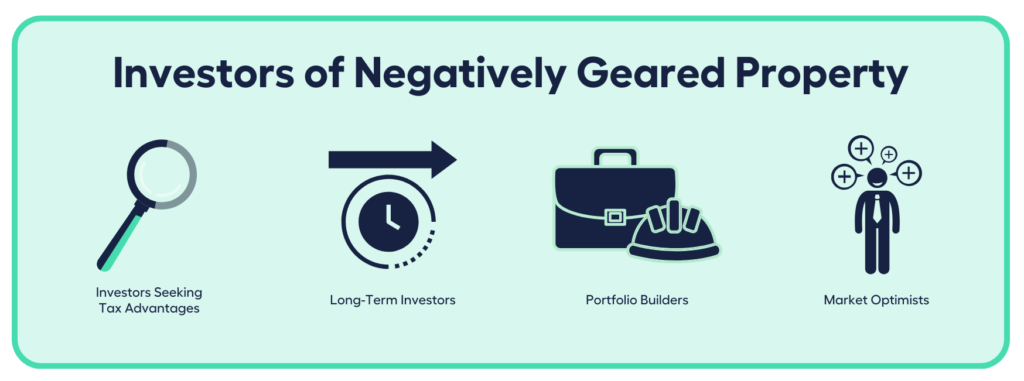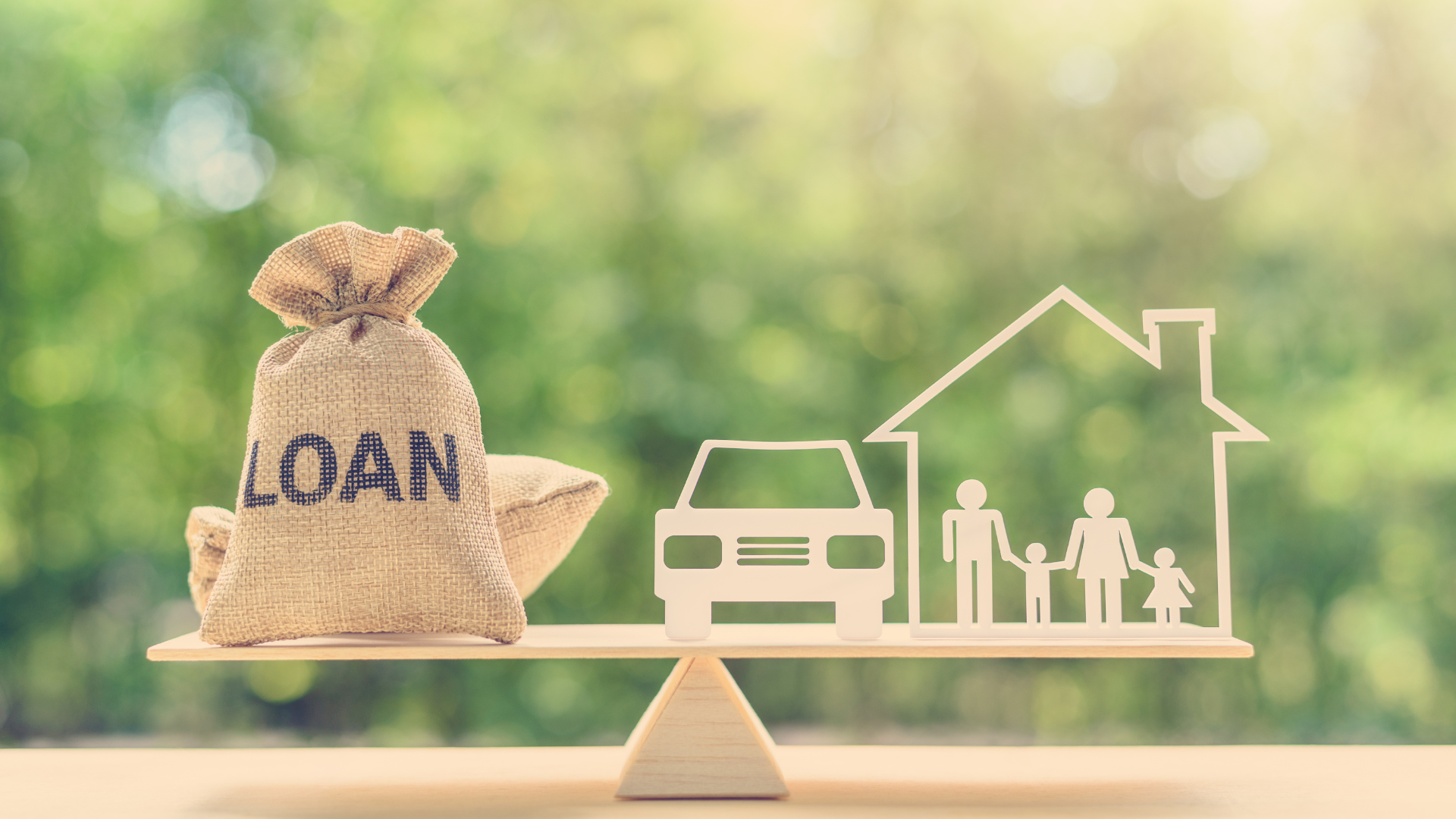For property investors in Australia, understanding the difference between positive and negative gearing is crucial in choosing the right investment strategy.

Positive gearing happens when you make more money from your investment property than you spend on it, providing a steady income with lower risk.
On the flip side, negative gearing happens when your property costs more to own than it makes in rent, resulting in a loss.
However, property investors will tell you that you can make money from both negative and positive gearing.
Negative gearing is often used as a way to start building an investment property portfolio, while positive gearing is more suitable for those looking to generate a passive income stream.
A clear understanding of how negative gearing occurs and positive gearing works is crucial in choosing the right investment strategy. Let’s take a deep dive on how property investors make a profit from both.
Jump straight to…
Definition: Positive Gearing
Positive gearing, also known as ‘positive cash flow investing’, happens when the investment property’s rental income covers all of its tax-deductible expenses.
It’s the conventional approach to earning profits from your investment properties.
Essentially, you tally up all your costs and other expenses such as interest, maintenance, rates, and insurance. If the rent you receive surpasses your expenditures on the property, you’re generating positive cash flow.
Advantages of Positive Gearing
The advantages of positive gearing can vary based on individual financial goals, personal circumstances, market conditions, and investment strategies. Generally, the following are the advantages of owning a property that’s positively geared:

Regular Income Stream: Positive gearing provides investors with a consistent and regular income stream. The rental income exceeds the property-related expenses, resulting in surplus cash flow.
Financial Stability: The steady income generated from positive gearing can contribute to financial stability, allowing investors to cover property-related costs and potentially allocate funds to other investments.
Reduced Financial Risk: Since the property is generating more income than it costs to maintain, there is a lower financial risk compared to negatively geared properties, where ongoing losses may need to be covered by the investor.
Income Diversification: Positive gearing allows investors to diversify their income sources. Instead of relying solely on employment income or other investments, they can create a diversified portfolio that includes cash flow from positively geared properties.
Immediate Returns: Investors can experience immediate returns on their investment, enjoying the positive cash flow from the outset. This can be particularly appealing for those seeking a quicker return on their investment.
Easier Loan Approval: Positive cash flow from the property can contribute to a healthier financial profile for a rental property, potentially making it easier for investors to secure loans or financing for future investments.
Tax Implications: While positive gearing generates taxable income, it also means that investors have a positive cash flow to cover potential tax obligations. Additionally, there may be opportunities to offset certain expenses against the income.
Portfolio Growth: Positive gearing can contribute to the growth of an investment portfolio, as the surplus cash flow can be reinvested in additional properties or used to pay down existing debts.
Disadvantages of Positive Gearing
It’s essential for investors to carefully weigh the following disadvantages against the potential benefits and consider their own financial goals, risk tolerance, and market conditions before opting for a positive gearing strategy.
Lower Capital Growth Potential: Positively geared properties may be situated in areas where there is slower capital growth potential. Investors focusing on immediate income may miss out on the long-term wealth accumulation that can come with higher capital growth.
Limited Tax Benefits: Positive gearing generates taxable income, and while it provides immediate cash flow, it may offer fewer tax benefits compared to negatively geared properties. Investors might have a higher tax liability.
Market Sensitivity: Positively geared properties can be sensitive to changes in the rental market. If rental prices decline or the property experiences periods of vacancy, the positive cash flow may be affected.
Property Selection Challenges: To find positively geared property that consistently generates positive cash flow can be challenging, especially in areas with high property prices or low rental yields. It may limit the choice of investment locations.
Limited Portfolio Diversification: Focusing solely on positive gearing may limit an investor’s ability to diversify their portfolio. They may miss out on potential opportunities in different property types or locations that offer other investment benefits.
Higher Purchase Costs: Properties with the potential for positive gearing may be in high-demand areas, leading to higher purchase costs. This could impact the overall return on investment.
Interest Rate Risks: Positive gearing often involves financing through loans, and changes in interest rates can affect the cost of borrowing. Rising interest rates may reduce the positive cash flow.
Property Management Challenges: Managing a positively geared property may require ongoing attention to maintenance, tenant management, and other responsibilities. Inadequate property management can impact the positive cash flow.
Definition: Negative Gearing
As mentioned earlier, a property is negatively geared when the income from it is not enough to cover the costs associated with it, such as mortgage repayments, maintenance expenses, interest, or depreciation.
So why invest in a property that does not provide sufficient income to cover its cost?
If your property operates with a negative cash flow, you’ll have to cover the deficit from your own funds; however, this could result in a reduction of your income tax.
Negative gearing becomes profitable only when the property is sold with increased capital value. If values are declining or stable, the owner may struggle to sell the asset at a price that compensates for losses incurred due to insufficient income.
Meanwhile, you benefit from a decrease in your taxable income while waiting for your property to appreciate in value.
Advantages of Negative Gearing
Property investors must understand the benefits of negative gearing to navigate the property market. Here are the benefits of negative gearing for investors seeking long-term financial rewards.

Tax Benefits: One of the primary advantages of negative gearing is the potential for tax benefits. Investors can offset the losses (expenses exceeding rental income) against their other taxable income, potentially reducing their overall tax liability.
While tax savings should not be the sole consideration when selecting an investment strategy, it is certainly a factor worth taking into account as you assess your options.
Capital Growth Potential: Investors may target properties in areas with high potential for capital growth, aiming to benefit from the property’s increasing value over time. While the property may generate a current loss, the expectation is that future capital appreciation will outweigh these losses.
Asset Accumulation: Negative gearing can be a strategy for accumulating assets over the long-term. Investors might be willing to sustain short-term losses with the expectation of building a portfolio that will appreciate in value over time.
Leverage Capital: Borrowing to invest, which is common in negative gearing, allows investors to leverage their capital. This can potentially magnify returns if the property’s value increases, although it also increases risks.
Entry into the Property Market: Negative gearing can assist investors in entering the property market, especially in regions where property prices are high. The ability to offset losses against other income sources can make property investment more accessible.
Portfolio Diversification: Negative gearing enables investors to diversify their investment portfolio. While one property may operate at a loss, the overall strategy may involve a mix of positively and negatively geared properties for balance.
Disadvantages of Negative Gearing
Investors considering negative gearing should carefully weigh these disadvantages against the potential benefits, considering their financial goals, risk tolerance, and market conditions.
Ongoing Cash Flow Drain: Negative gearing means the property is not generating enough rental income to cover expenses, leading to an ongoing cash flow deficit. Investors must cover these losses from other income sources.
Dependence on Property Appreciation: The success of a negatively geared property often relies on the property’s value appreciating over time. If the market doesn’t experience significant capital growth, the investor may struggle to offset previous losses.
Market Volatility Risk: Property values can be influenced by market fluctuations. Economic downturns or a decline in property values could impact the investor’s ability to sell the property at a profit when relying on capital appreciation.
Interest Rate Risks: Negative gearing often involves borrowing to invest, exposing investors to interest rate fluctuations. An increase in interest rates could elevate the cost of borrowing, further impacting cash flow.
Potential Selling Difficulties: If the property market is unfavourable at the time of sale, the investor may face challenges selling the property at a price that compensates for earlier losses. This is particularly significant if the property was negatively geared for an extended period.
Tax Benefits May Change: Tax laws and regulations can change, potentially affecting the availability and extent of tax benefits associated with negative gearing. Investors should stay informed about any legislative changes.
High Initial Costs: Acquiring a negatively geared property often involves significant upfront costs, including the initial deposit, stamp duty, and legal fees. This can be a barrier for some investors.
Limited Short-Term Returns: Negative gearing may not provide immediate returns, and investors may need to sustain losses for a considerable period before the property’s value appreciates sufficiently.
Reduced Liquidity: Holding a negatively geared property can tie up significant capital and reduce liquidity, limiting an investor’s ability to respond to other investment opportunities.
Negatively or Positively Geared: Which is Better for Property Owners?
The choice between negative gearing and positive gearing for property owners depends on your own financial situation, goals, risk tolerance, and market conditions. Here’s a summary of the key points one must consider:
Negative gearing offers potential for capital appreciation and tax savings through deductions, but requires sufficient cash flow to cover losses and poses challenges in building a property portfolio.
Positive gearing generates immediate passive income and reduces vulnerability to interest rate rises, but has higher tax implications and limited capital appreciation potential compared to negatively geared properties.
Neither negative nor positive gearing is universally better; it depends on the investor’s financial circumstances and objectives.
Some investors may prefer the potential long-term gains associated with negative gearing, while others may prioritise immediate income and reduced financial risk with positive gearing.
Who Benefits From Negative Gearing?
Negative gearing is a strategy that appeals to specific groups of investors, offering potential benefits to those seeking tax advantages, long-term capital growth, and the gradual accumulation of a property portfolio.

Investors Seeking Tax Advantages: Negative gearing provides tax benefits, allowing investors to offset losses against other taxable income. This appeals to individuals looking to minimise their overall tax liability.
Long-Term Investors: Investors with a focus on long-term capital growth may benefit from negative gearing. The strategy aligns with those willing to sustain short-term losses with the anticipation of future property value appreciation.
Portfolio Builders: Negative gearing can be attractive to investors aiming to build a property portfolio over time. The ability to offset losses against income can help in accumulating assets.
Market Optimists: Investors who believe in the potential for the property market to experience significant capital growth may find negative gearing appealing, as it positions them to benefit from future appreciation.
Is Negative Gearing a Risky Strategy?
It’s essential to recognise the inherent risks associated with negative gearing.
Cash flow risks, market dependency, sensitivity to interest rate fluctuations, uncertainties about capital growth, and potential challenges in selling the property under unfavourable market conditions are factors that investors must carefully consider.
Cash Flow Risks: Negative gearing involves ongoing cash flow deficits, requiring investors to cover losses from their own funds. If unexpected expenses arise or the property remains vacant, it can strain financial resources.
Market Dependency: The success of negative gearing is often dependent on favourable market conditions, particularly property value appreciation. Economic downturns or stagnant property markets can impact the strategy’s effectiveness.
Interest Rate Sensitivity: As negative gearing often involves borrowing, investors are exposed to interest rate fluctuations. Rising interest rates can increase borrowing costs and affect cash flow.
Capital Growth Uncertainty: While negative gearing is often associated with the anticipation of capital growth, there’s no guarantee that property values will appreciate as expected, especially in unpredictable markets.
Tax Laws Changes: Changes in tax laws or policies can impact the extent of tax benefits associated with negative gearing. Investors should stay informed about any legislative changes that might affect their strategy.
Selling Challenges: Selling a negatively geared property can be challenging if market conditions are unfavourable. Investors may struggle to sell the property at a price that compensates for earlier losses.
How Much Tax Does Negative Gearing Save?
According to the Australian Taxation Office (ATO), you may qualify to deduct the interest portion of your loan repayments, as well as costs related to repairs and maintenance on the property.
The resulting net loss from the property can potentially offset against your personal income, leading to a decrease in your taxable income.
To illustrate, if your annual salary is $90,000 and your property incurs a $5,000 annual deficit, you might be able to deduct this amount from your taxable income, lowering it to $85,000. Conversely, investors with a positively geared property may be liable to pay taxes on their rental income profits.
The Australian Taxation Office (ATO) offers a guide on rental income and expenses for more information. It’s advisable to consult with your accountant or financial advisor for personalised advice based on your individual circumstances.
Can Negative Gearing Reduce Capital Gains Tax?
If you generate rental income from your investment property, you are liable to pay tax on that income. Similarly, when you sell the property and realise a net profit, you will also be subject to tax.
The profit from selling an investment property is typically considered a capital gain, and the associated tax is known as Capital Gains Tax (CGT).
The amount of CGT you owe is influenced by various factors. For instance, if you sell the property at a profit after owning it for more than a year, you might qualify for a CGT discount.
For more information on CGT, visit the Australian Tax Office (ATO) website or get intouch with a tax lawyer, tax accountant, or tax advisor.
Does Negative Gearing Increase House Prices?
Negative gearing investment properties can have an impact on house prices, as it has been known to increase housing prices by as much as 4% according to the Australian Financial Review.
This is because the tax advantages of negative gearing can drive up demand for investment properties, leading to increased competition and higher property prices.
Some factors that contribute to the relationship between negative gearing and house prices include:
Encouraging property investment: Negative gearing has been a powerful tool in encouraging property investment for three decades.
Tax deductions: The tax advantages of negative gearing can lead to higher demand for investment properties.
Capital growth: Negatively geared investments like properties depend on appreciation in value over time, which makes them a long-term investment.
However, it is essential to consider the potential downsides of negative gearing, such as the risks associated with interest rate rises. The impact of negative gearing on house prices can also vary depending on factors like location, property type, and market conditions.
Need Help Understand All the Benefits of an Investment Property? Book a FREE 15 min Call or Send Us Your Questions!










